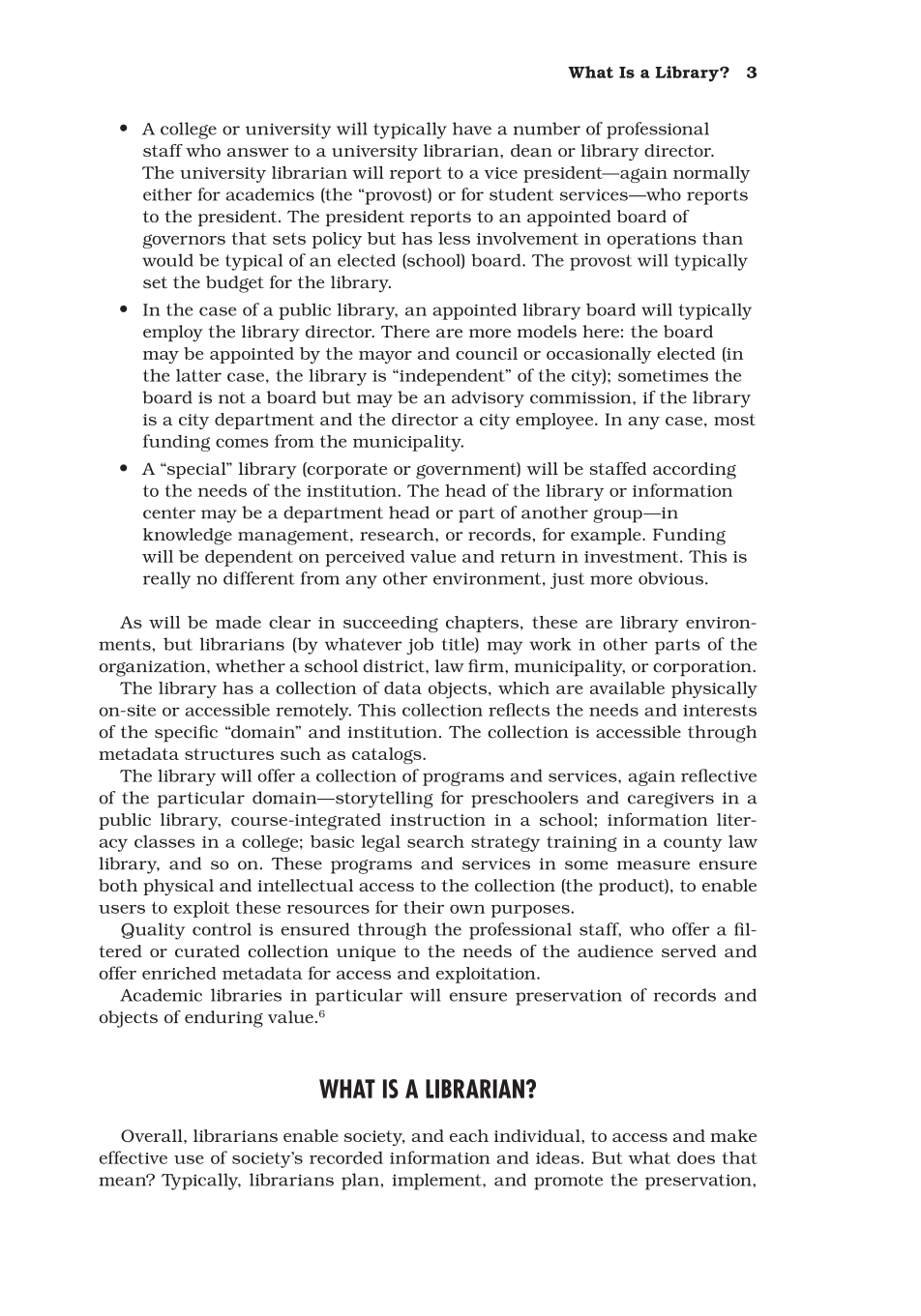What Is a Library? 3
•
A college or university will typically have a number of professional
staff who answer to a university librarian, dean or library director.
The university librarian will report to a vice president—again normally
either for academics (the “provost) or for student services—who reports
to the president. The president reports to an appointed board of
governors that sets policy but has less involvement in operations than
would be typical of an elected (school) board. The provost will typically
set the budget for the library.
•
In the case of a public library, an appointed library board will typically
employ the library director. There are more models here: the board
may be appointed by the mayor and council or occasionally elected (in
the latter case, the library is “independent” of the city); sometimes the
board is not a board but may be an advisory commission, if the library
is a city department and the director a city employee. In any case, most
funding comes from the municipality.
•
A “special” library (corporate or government) will be staffed according
to the needs of the institution. The head of the library or information
center may be a department head or part of another group—in
knowledge management, research, or records, for example. Funding
will be dependent on perceived value and return in investment. This is
really no different from any other environment, just more obvious.
As will be made clear in succeeding chapters, these are library environ-
ments, but librarians (by whatever job title) may work in other parts of the
organization, whether a school district, law firm, municipality, or corporation.
The library has a collection of data objects, which are available physically
on-site or accessible remotely. This collection reflects the needs and interests
of the specific “domain” and institution. The collection is accessible through
metadata structures such as catalogs.
The library will offer a collection of programs and services, again reflective
of the particular domain—storytelling for preschoolers and caregivers in a
public library, course-integrated instruction in a school; information liter-
acy classes in a college; basic legal search strategy training in a county law
library, and so on. These programs and services in some measure ensure
both physical and intellectual access to the collection (the product), to enable
users to exploit these resources for their own purposes.
Quality control is ensured through the professional staff, who offer a fil-
tered or curated collection unique to the needs of the audience served and
offer enriched metadata for access and exploitation.
Academic libraries in particular will ensure preservation of records and
objects of enduring value.6
WHAT IS A LIBRARIAN?
Overall, librarians enable society, and each individual, to access and make
effective use of society’s recorded information and ideas. But what does that
mean? Typically, librarians plan, implement, and promote the preservation,











































































































































































































































































































































































































